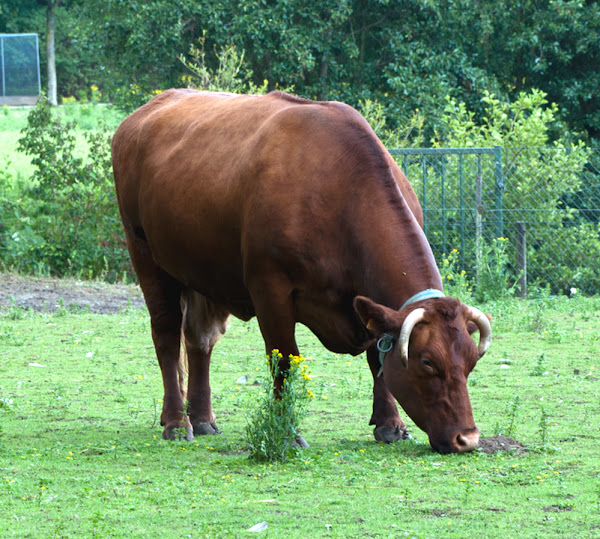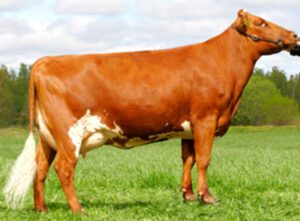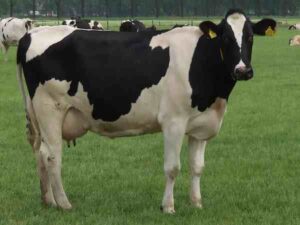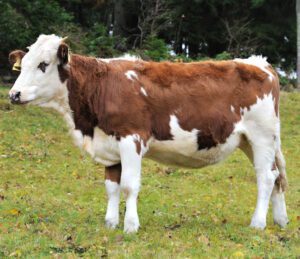The Belgian Red cattle are a multipurpose breed of cattle developed in the West Flanders region of Belgium. Currently it is considered in danger of extinction.
The breed also known by some other names such as Red Flemish, West Flemish, West Flemish Red, Rood ras van België (Flemish) and Rouge de Belgique (French).
It was actually developed from the local cattle breeds, Cassel and Veurne-Ambacht of the region. Those original breeds nearly came into extinction during the First World War in Belgium.
Pasture of West Flanders were turned into battlefields during the war which practically eradicated the total population of the breed.
And after the war, the breeders came together in cooperation to form a new breed of cattle which was called the West Flemish. And the first stud book for the breed was introduced in 1920.
Currently the breed is found throughout West flanders and constitutes about 7 percent of the Belgian national herd.
Total population of the Belgian Red cattle were about 50,000 in 1986. But their population decreased rapidly and there were only 100 cows left in the world in 2001.
Today the breed is considered in danger of extinction. Read more information about the breed below.
Belgian Red Cattle Characteristics
Belgian Red cattle are generally long, heavy and large animals. They are primarily solid red in color with potentially a few white patches on head, underline, dewlap and legs and also on udder or scrotum. Both bulls and cows usually have horns.
Average body height of the mature Belgian Red cows is around 138 cm at shoulder, and about 153 cm for the bulls.

Average live body weight of the mature bulls is around 1200 kg. And the mature cows on average weight around 700 kg. Photo and info from Wikipedia.
Uses
The Belgian Red cattle are actually a dual-purpose animal, and good for both milk and meat production. But they are also good for using as a draught animal.
Special Notes
The Belgian Red cattle are highly productive animals. They are being raised for both milk and meat production. But after 1980s selection for two separate strains (milk, meat or dual-purpose) were created by the breeders.
The cows are pretty good milk producers. And on an average they can produce about 5,000 kg of milk per lactation.
Their milk is of average quality containing about 4.27 percent butterfat content and about 3.43 percent of protein.
However, review full breed profile of the Belgian Red cattle in the following chart.
| Breed Name | Belgian Red | |
| Other Name | Also known by some other names such as Red Flemish, West Flemish, West Flemish Red, Rood ras van België (Flemish) and Rouge de Belgique (French) | |
| Breed Purpose | Mainly milk and meat, also draught | |
| Special Notes | Well adapted to native climates, very good for meat production, very hardy, good for milk | |
| Breed Size | Large | |
| Bulls | Around 1200 kg | |
| Cows | Around 700 kg | |
| Climate Tolerance | Native climates | |
| Coat Color | Primarily solid red with potentially a few white patches on head, underline, legs, dewlap and udder | |
| Horned | Yes | |
| Milk Yield | Good | |
| Rarity | Common | |
| Country/Place of Origin | Belgium |






